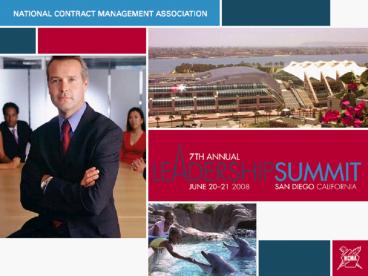Ed Velasquez, CPCM, Fellow - PowerPoint PPT Presentation
1 / 17
Title:
Ed Velasquez, CPCM, Fellow
Description:
Demonstrate consistency of action do precisely what you say you will, every time. ... in a small way, face-to-face is the most effective recruitment technique. ... – PowerPoint PPT presentation
Number of Views:74
Avg rating:3.0/5.0
Title: Ed Velasquez, CPCM, Fellow
1
(No Transcript)
2
How to Recruit, Organize and Retain Volunteers
Ed Velasquez, CPCM, Fellow NCMA Board of
Directors June 20, 2008 1030 1100 am
3
Your Objective
- Maintain an effective chapter organization that
provides value to members by - Recruiting members to serve as volunteer leaders,
and - Preparing them to lead the chapter.
4
The Leadership Challenge
- How can I leave the organization in a better
condition than when I joined it? - How do I motivate people without applying
tangible rewards and discipline? - How do I manage and lead an organization without
having direct control over individual
performance? - How do I ensure chapter knowledge is effectively
transferred to new leaders?
5
1959-1995.Leadership succession was orderly,
with a gradual and deliberate transfer of
knowledge.
1 2 3 4
5 6 7
(YEARS)
There was significant overlap of leaders.
Corporate knowledge was retained.
Members spent years learning the ropes. It took
3-5 years to achieve the pinnacle.
6
1996-2008More frequent, abbreviated transfers of
knowledge. In some cases, no direct transfer of
knowledge.
1 2 3 4
5 6 7
(YEARS)
Little or no overlap of leaders. Corporate
knowledge is lost.
Members assume leadership positions without
preparation. Pinnacle achieved in 0-3 years.
7
- What do we need to do???
8
Step 1 Prepare Yourself To Lead
- Understand the current environment.
- Whats happening in Contract Management?
- Whats the countrys economic condition?
- What are your chapters customers planning?
- Know everything about NCMA and your chapter.
- Available programs and services.
- NCMA policies.
- Customary practices.
- Develop a vision that can be shared.
- Team behavior starts with a feeling of shared
ownership.
9
Step 2 Lead by Example
- Exemplify integrity of character be open and
honest, every time. - Demonstrate consistency of action do precisely
what you say you will, every time. - Perpetuate transparency of decision-making
involve others, every time. - Evidence self improvement through NCMA
leadership development programs or otherwise.
Show them how its done!
10
Step 3 Create a Positive Environment
- Have an optimistic outlook
- Build it and they will come.
- Be goal oriented
- Begin with the end in mind.
- Apply team-based problem-solving and
decision-making - Avoid unilateral decisions.
- Foster inclusion through diversity
- Whether by industry, gender, sector, ethnicity,
or generation. - Provide frequent formal and informal rewards.
- Were all volunteers, so wheres the love?
Show them their efforts are worthwhile and valued!
11
Step 4 Know Your Members, Their Stakeholders,
and Your Volunteers
- Who are your members? What are their interests
and challenges? What are your plans to service
those needs? - What are their employers problems, and
challenges? - Let members and their employers know they can
contribute to chapter success by participating as
volunteer leaders. - Understand the commitment required to run the
chapter. - Learn the knowledge, and core competencies
essential for getting the work done, today and in
the near future. - Get to know the background, the skills, and the
abilities of your volunteer members.
12
Step 5 Recruit Your Team
- Asking for help in a small way, face-to-face is
the most effective recruitment technique. - E-mail, newsletter, and website calls for
assistance may develop a short list of possible
candidates. - You need to ask them personally to secure their
commitment. - Have task descriptions, not job descriptions.
- Be as specific as you can.
- Break work up into smaller chunks, of shorter and
more definite duration. - People will avoid adding a new responsibility
to their workload, particularly if the obligation
is unknown or open-ended (and possibly
limitless).
13
Step 6 Create a Succession Plan
- Must be fluid people come and go quickly.
- Develop agreements, which are moral
contracts, with key volunteers. - Do not be afraid to fire a volunteer. Of
course, how you handle it is most important. - Dont just let it happen. Not everyone is
suited to lead the chapter. Recruit talent, and
match it to the right job. - Put more effort into knowledge transfer dont
just hand over files. - Utilize mentors more effectively.
14
Step 7 Make Yourself Replaceable
- Have a plan for yourself what do you do next?
- Make it clear to your team that you are moving on
following your plan. - Does not mean you cannot continue your
participation as a mentor or advisor. - Let go!
15
Dont Forget the Students!
- Give them every opportunity to participate, lead,
learn, and excel! - Now is the time to train your replacements!
- Needs and expectations of Gen X Millennials
- They want value from an association, but with a
sense of immediacy. - Communication is by electronic means-texting,
etc. - They want to share their value with others
students as well as the association leaders. - Associations Now, May 2008
16
In summary
- Leave the organization in a better condition than
when you joined it. - Prepare yourself to lead.
- Lead by example.
- Create a positive environment.
- Know your customer base.
- Know your team.
- Create a succession plan.
- Make yourself replaceable.
17
(No Transcript)
















![Your Path to Certification [CFCM, CCCM, CPCM]: D1A PowerPoint PPT Presentation](https://s3.amazonaws.com/images.powershow.com/7997432.th0.jpg?_=20160721028)














